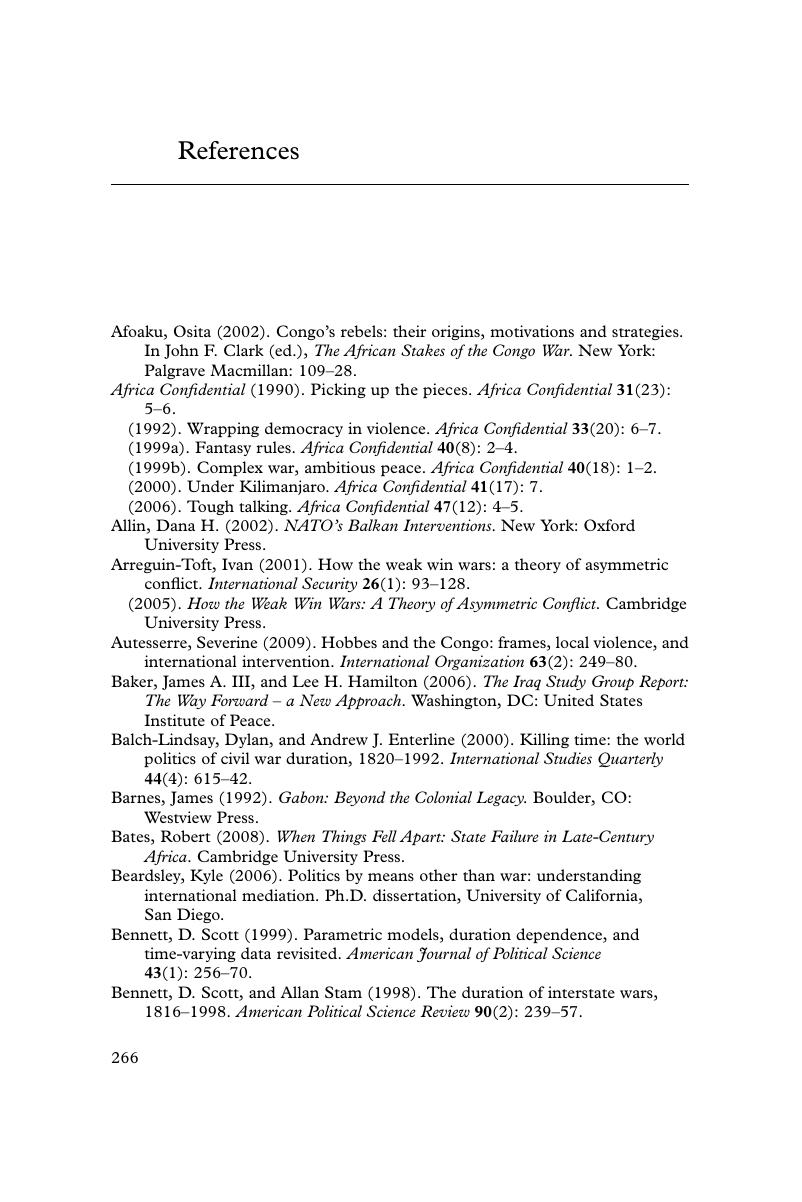Book contents
- Frontmatter
- Contents
- List of figures
- List of tables
- Acknowledgements
- List of acronyms
- 1 Introduction
- 2 A veto player theory of conflict bargaining
- 3 Testing the effect of veto players on duration
- 4 Bargaining and fighting in Rwanda and Burundi
- 5 The effects of veto players on conflict severity, genocide, and the duration of peace
- 6 Designing peace processes in multi-party civil wars
- 7 Conclusion
- Appendix A Civil wars included in the dataset
- Appendix B Descriptive statistics for variables in quantitative analyses
- References
- Index
- References
References
Published online by Cambridge University Press: 05 October 2012
- Frontmatter
- Contents
- List of figures
- List of tables
- Acknowledgements
- List of acronyms
- 1 Introduction
- 2 A veto player theory of conflict bargaining
- 3 Testing the effect of veto players on duration
- 4 Bargaining and fighting in Rwanda and Burundi
- 5 The effects of veto players on conflict severity, genocide, and the duration of peace
- 6 Designing peace processes in multi-party civil wars
- 7 Conclusion
- Appendix A Civil wars included in the dataset
- Appendix B Descriptive statistics for variables in quantitative analyses
- References
- Index
- References
Summary

- Type
- Chapter
- Information
- Barriers to Peace in Civil War , pp. 266 - 278Publisher: Cambridge University PressPrint publication year: 2011



